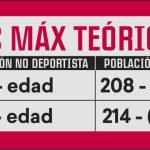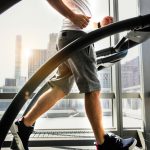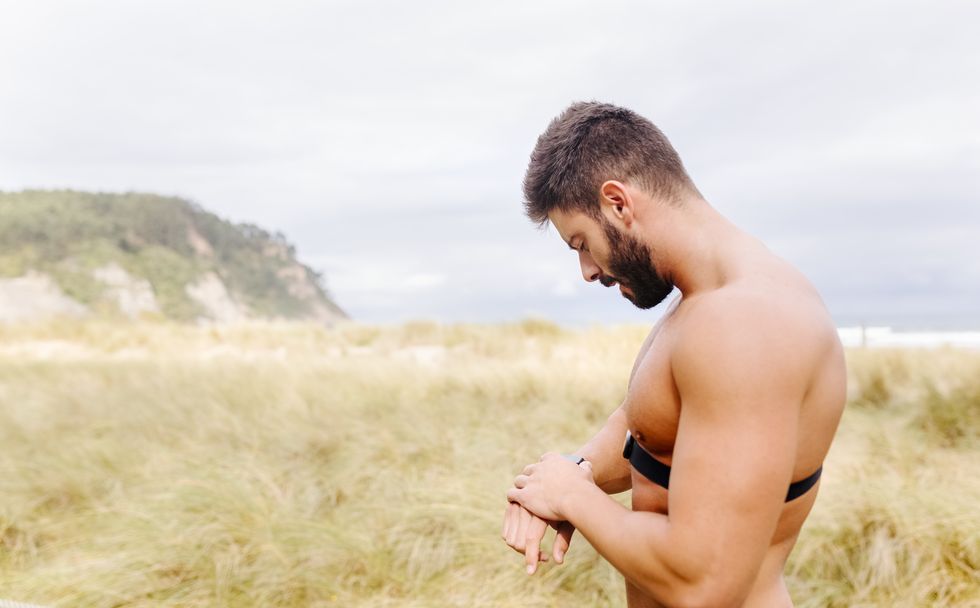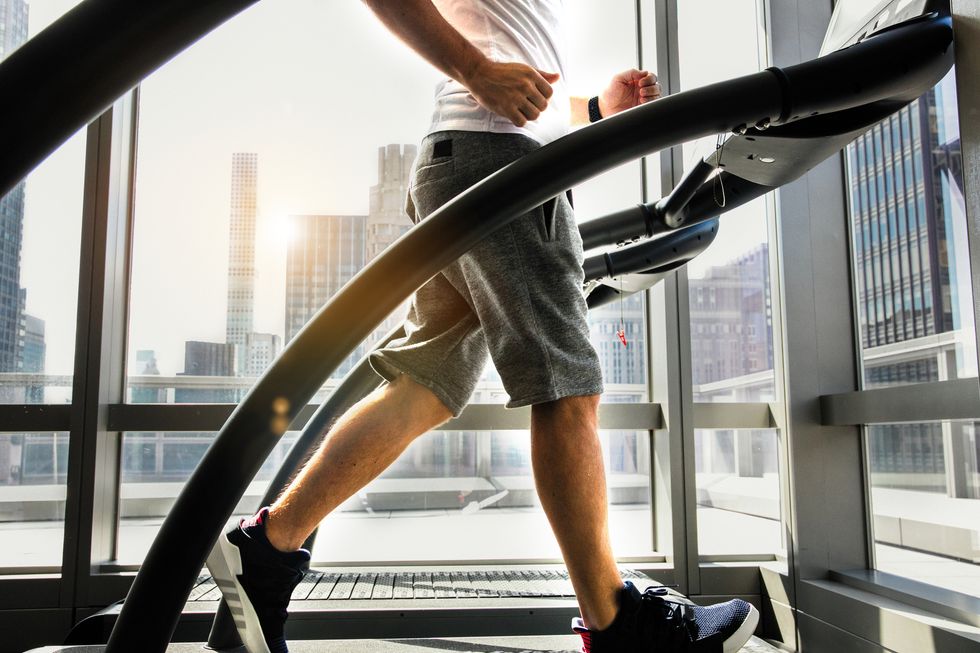



Fitness is measured by the degree of intensity at which one can exercise, and determines the appropriate level of physical work. We must be especially careful not to go overboard, not to train above our capacity, and, in fact, that is where they come from. The most common injuries among beginner runners. On the other hand, if you train below your fitness level, you won’t improve. That is why it is so important to follow a training plan appropriate to your level.
Before starting physical activity it is advisable to carry out a complete medical examination to check how healthy we are and to know to what extent we can push our body to the limit. This protocol usually includes an analysis, an electrocardiogram, echocardiogram, spirometry, various biomechanical tests… and, above all, a stress test. A visit to the doctor is especially important if you suffer from hypertension, diabetes, or heart or kidney ailments. See your doctor if your neck, chest, jaw, and arms hurt when you run. Also if you are short of breath or feel dizzy or weak, if your ankles swell or if you have pain that is not relieved by rest.
Methods for measuring intensity
Effort control
High-tech equipment can measure effort intensity, but a simple assessment based on how you feel has been shown to be an effective method. The effort perceived when exercising is directly related to the intensity of the work of the heart and the aerobic respiratory system. One of the best ways to monitor effort is through the rate of perceived exertion (RPE, Rate of Perceived Exertion) which measures your subjective level of effort on a scale of one to ten.
The fitter you are, the more intensely you can exercise with a low rate of perceived exertion.either. The intensity of each race must be planned to ensure an adequate level of training and correct recovery.
Heart rate control
Heart rate rises in a linear relationship with increasing effort, making it a good way to measure intensity. If its evolution is followed over time, it can indicate the level of physical fitness. For example, if the pace of walking can be increased to a specific heart rate, this indicates that it is no longer difficult to make the effort. But Heart rate is affected by fatigue, heat, terrain and other variables, so it is advisable to use RPE also when training.
During training, you can use a heart rate monitor or watch to measure the heart rate recovery (HRR, Heart Rate Reverse), the range in which you can exercise, which is the difference between the resting heart rate (RHR, Resting Heart Rate) and your maximum heart rate (HRMax), the highest number of beats per minute that your heart can reach without endangering your health. A high RHR can warn of overtraining.
Rhythm control
The pace of the race is another measure of intensity, since the higher the speed, the greater the effort. A training program that includes series at different paces improves aspects such as aerobic efficiency and lactate elimination. The target pace is the estimated speed in minutes/km at which you have to run to achieve a given time. For longer distances the pace is relatively slower than for shorter ones, since it must be maintained for a longer time. Training different rhythms shows strengths and weaknesses. Depending on the type of training to be followed, you will be required to maintain a certain pace, which may also vary.
You can discover it in the Runner’s World training pace calculator:
Comparison of RPE (rate of perceived exertion), heart rate and running pace
The relationship between RPE, heart rate and pace is relative, since the pace of a runner with RPE 3 will be different from that of another with the same rate of perceived exertion. However, with more factors such as average heart rate and running pace in each workout, we know the effort made at a specific pace. However, there will be fluctuations in running pace if you are tired or stressed and training will be more difficult. Fitness will improve pace at a given heart rate or RPE: The better your physical shape, the easier the training is and there will be a decrease in heart rate. If a pace feels harder or your heart rate increases, it may be a sign of fatigue or overtraining.
Physical Fitness Tests
To establish objectives at the beginning of a training program and check improvements, it is very useful to perform physical fitness tests. To track progress, these tests can be repeated, but the best way to measure progress is to compete. The lactate threshold (LT) and the VO2 max (VO2 Max) are good ways to measure physical fitness, they can be known through the following tests:
Reference lactate threshold rhythm
Although the actual lactate threshold (LT) can vary, it is useful to use a reference threshold. In running there are several methods to estimate our lactate threshold. A fairly accurate estimate would be our average pace and our average heart rate in a 10km race.
Calculate your VO2 Max
for dTo determine your VO2 Max with maximum precision, it is best to calculate it clinically, with laboratory machines.. You can undergo a medical examination with stress tests on a treadmill or stationary bike, supervised by a cardiologist or physio. But there are also other ways to calculate it, less precise, sYou only need a sports watch or a heart rate monitor.
Tape test
There is a very high intensity 10 minute test, so only do it if you train regularly.
- Warm up and then set the treadmill to 1% incline.
- Run for 2 minutes following the RPE values or index of perceived exertion, which at this moment would be 5. Adjust the speed so that your RPE remains at the stipulated level at all times.
- From the second to the fourth minute the RPE has to be around 7, it is already a somewhat high effort. In the next two minutes you must increase the effort to 8 and then to 9 in the other two.
- In the last two minutes it is an effort to the limit. When it starts, increase your speed to end up running as fast as you can. This will make you tired very quickly.
The results are the maximum heart rate you recorded during the test. Use this number to determine your training zones. For example, tempo runs are done at 85% of your max, but easy runs are usually at 70-80%.
Other types of tests to calculate your VO2 Max
You can calculate your VO2 Max easily thanks to the formulas of the Cooper Test, the Rockport Test, the Course Navette Test. They give an approximate calculation that makes it easy to know what your physical condition is before exercising. There are more methods to measure running intensity, but these are the ones recommended by Chris Napier in his book Running.

Rosa Martí is an expert in books, literary news, fitness, yoga and nutrition. She has been linked to different Hearst titles for more than 10 years, where she writes about literature in Esquire and about exercise and well-being in Men’s Health, Women’s Health and Runner’s World.
His experience is backed by an extensive career in which he combines devouring books, writing texts, running marathons, translating comics and novels, philological research, literary criticism, classical ballet, practicing yoga daily and preparing his doctoral thesis.
In Esquire you can read its content on books (sorted by genre, style or author) and its entertainment articles. The same thing tells you which are the most curious demonyms, the most beautiful words in Spanish or the most original insults in English.
In Men’s Health, Women’s Health and Runner’s World, on the other hand, he focuses on his healthier side, writing about nutrition and food, about exercises and training (especially focused on running, yoga, cycling and swimming) and about health and well-being.
Rosa Martí has a degree in Modern Languages from the University of the West of England, a degree in Applied Languages from the University of Rennes II in France and a degree in Arts and Humanities studied at the University of Barcelona. She also has a master’s degree in Philology and Literature from the Autonomous University of Barcelona, a faculty in which she prepares her doctoral thesis.
All this training has led her to be a translator of books, comics and the printed version of Esquire. She has been writing for more than 10 years in different media such as Esquire, Runner’s World, Women’s Health, Men’s Health, El País and Vanitatis.




